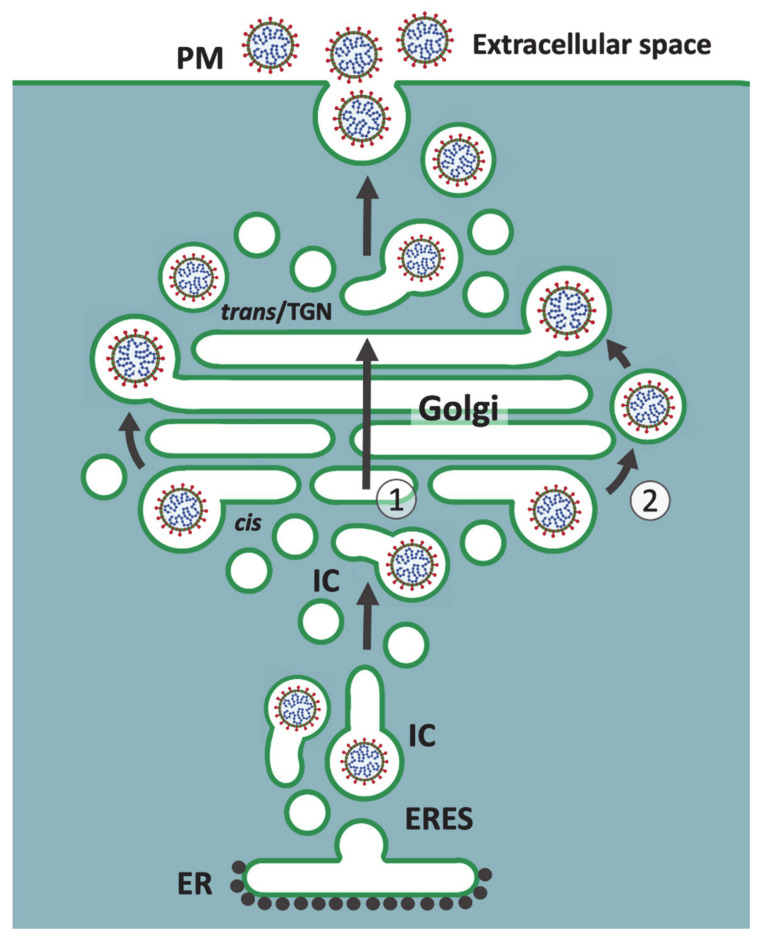Figure 2.
Two alternative current models of CoV release from host cells. Following their budding into the IC lumen, progeny CoVs are transported to the Golgi apparatus in IC-derived transport carriers. According to one scenario (Route 1) both the IC elements and Golgi cisternae are maturing structures. In this case, CoVs enter the Golgi stacks as the pre-Golgi carriers transform into cis-Golgi cisternae and are then transferred across the stacks following cis-to-trans movement of the maturing cisternae. Due to their large size, the virus particles are confined to the dilated ends of the mobile Golgi cisternae. Another possibility (Route 2) is that progeny CoVs enter “megavesicles” that bud from and fuse with the ends of Golgi cisternae, which in this case are considered as more static structures. Notably, both models propose that the transport of CoVs requires the integrity of the Golgi stacks. Following their arrival at trans-Golgi/TGN the virus particles are thought to be sorted to post-Golgi carriers for cell surface delivery along the constitutive secretory pathway. Of note, this illustration does not make a distinction between the pre- and post-Golgi forms of maturing CoV particles [16,89].

